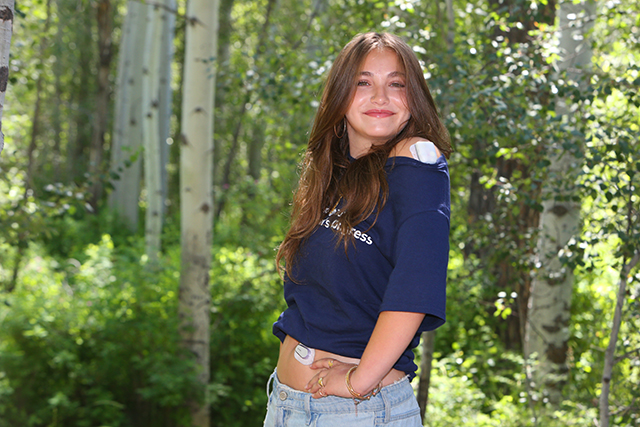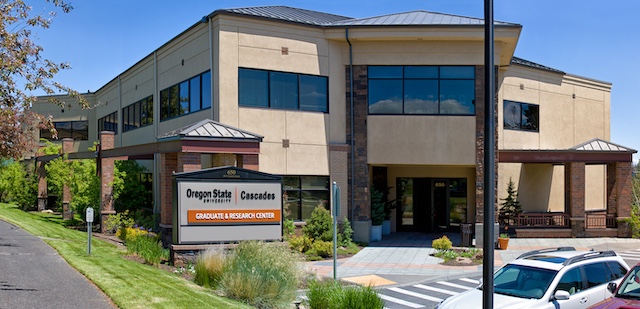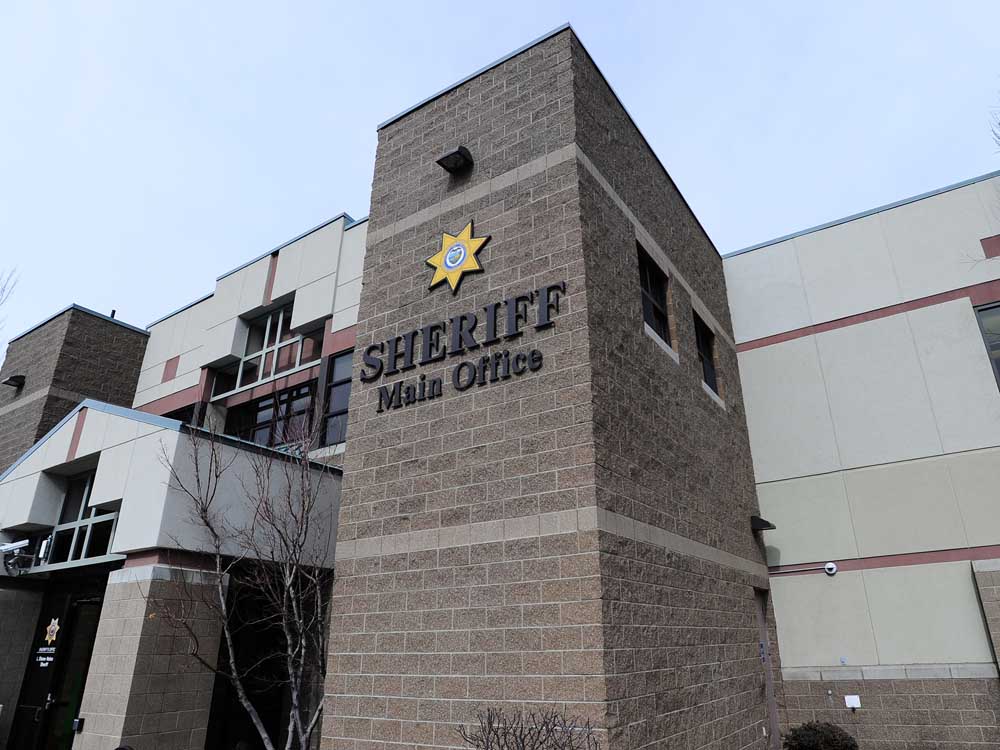Europe, feet first
Published 5:00 am Sunday, April 21, 2013
So much of the travel experience involves the schedules and deadlines of airlines, trains, buses and cabs. But there’s another way to see the sights: at ground level. Here are eight suggestions for appreciating the bustle of the city and the solitude of the European countryside at, literally, your own pace.
Berlin canal walk
Trending
Berlin might not be defined by its waterways — like, say, Amsterdam or Venice — but they are among the city’s most endearing characteristics. On a spring day, there are few better walking routes than the stretch of the Landwehrkanal that runs through the Kreuzberg quarter and the rapidly gentrifying immigrant district of Neukolln. Built in 1850, the Landwehrkanal was once used as a drainage system and to transport goods. Today, it’s used mainly by tourist boats and other watercraft, many bearing anti-capitalist flags or rigged with bass-heavy sound systems.
Start at the Lohmuhlenbrucke, where the canal forks out to the River Spree.
The former East Berlin district of Treptow starts just on the other side (the bridge used to come to an end at the Berlin Wall). Follow the weeping-willow-lined canal westward. If it’s Sunday, ironically attired residents can be found selling hand-drawn comic strips and vintage costume jewelry at the canalside Nowkoelln Flowmarkt. Tuesdays and Fridays, the lively older Turkish Market unfolds a bit farther down. Produce, baked goods, spices, fabrics and other wares represent the Turkish-Kurdish-Arab community that has historically resided here. In the barking cadences of a seller at an Istanbul bazaar, Turkish men in tracksuits belt out the price of tomatoes — in German.
Cross Kottbusser Damm and follow the canal past the startlingly grand, curved facades of the Jugendstil residences that stare across the water at the remaining wing of the neoclassical-style Fraenkelufer Synagogue, which was desecrated by the Nazis but once again houses an active congregation. Continue on to the Admiralbrucke, a wrought-iron art nouveau bridge; depending on your level of tolerance or inebriation, join the backpackers and others drinking beer and listening to Spanish street musicians play bad Oasis covers. Finally, venture on until you reach the grassy banks of the Planufer where residents picnic and read as boats slide by.
— Charly Wilder
In Istanbul, the Golden Horn
Trending
Turkey is a majority Muslim country, but Istanbul’s religious history remains multicultural. Evidence of this is visible during a 2 1/2-hour walk along the Halic, or Golden Horn, which separates the Old City from the more contemporary Beyoglu. At the Fener (“lighthouse”) bus stop, cross Abdulezelpasa Caddesi — the main shore road — and walk past the trinket shops to the walled compound that includes the Church of St. George, seat of the Eastern Orthodox Church. Inside, you’ll find the ivory-inlaid throne of the patriarch, Bartholomew, and a wall of gilded icons. Farther up the main avenue is the golden-domed Church of St. Stephen of the Bulgars, constructed of iron panels that were cast in Vienna, barged down the Danube and pieced together here in the late 1800s.
Continue along Murselpasa Caddesi for a meatball break at Kofteci Arnavut (look for a Mavi Kose sign), then duck into the Jewish neighborhood of Balat to reach the intersection with Leblebiciler Sokak (the Sellers of Roasted Chickpeas Street). Straight ahead is the Yanbol Synagogue, named for a town in Bulgaria. Continuing deeper into Balat takes you to the Ahrida Synagogue, with its restored wooden interior dome.
Head back to the main road and walk along the waterside parks where Turkish families picnic. Pass under the highway bridge, past Feshane, a former Ottoman fez factory, cross the boulevard and walk past the souvenir market to the Eyup Sultan Mosque and the tomb of the standard-bearer for the Prophet Muhammad. Here you can see brides in lacy gowns praying and boys parading in white capes and caps as part of their circumcision rituals.
To the left is a passageway uphill through a tulip-accented cemetery to the Pierre Loti Cafe, named for the French naval officer and novelist. From the cafe, over pistachio ice cream and coffee (still brewed over hot coals), you can see all the way to Topkapi Palace.
— Susanne Fowler
The wobbly bridge in London
They nicknamed it the “wobbly bridge” when it opened, in 2000, because an engineering miscalculation caused it to sway so badly that people who tried to walk across it grew dizzy and even fell down. But after it was modified and opened again two years later, the Millennium Bridge, a pedestrian-only suspension bridge across the Thames, connecting Bankside on the south side to the City of London financial district on the north, became one of the great walking experiences in a city that might have been invented for strolling.
At 1,006 feet long, the bridge takes just five minutes to cross and can be a destination in itself. At one end is St. Paul’s Cathedral, and that is where I like to start; you climb up to the top and get someone to whisper at you from across the Whispering Gallery, and then you climb down again. Then you walk straight down to the Thames and the bridge, slender and elegant in gleaming steel.
As you cross, the noises and bustle of the city fade away, replaced by the caws of sea gulls. All of London seems laid out around you: Blackfriars Railway Bridge and Southwark Bridge up- and downriver; the Shard, a tall, thin, new addition to the London skyline, upriver; St. Paul’s Cathedral, with the ovaloid building known as the Gherkin in the distance, behind you; the Tate Modern, a glorious celebration of art housed in an enormous building that was once a power station, directly in front.
And next to that, the small and humble Globe Theatre, a replica of Shakespeare’s original theater, authentic even down to its thatched roof. There is no better spot than the Millennium Bridge from which to appreciate London as a palimpsest, the new gracefully overlaid on the old, as if every era coexisted with every other era in perpetuity, all at once.
— Sarah Lyall
Tapas in Madrid
The visitor who happens upon Madrid’s Cava Baja on a weekend evening could be forgiven for thinking a public celebration of the sort that accompanies World Cup championships or overturned dictatorships was under way. In fact, for the joyous hordes of young people who stroll its length while flirting, singing, smoking and occasionally stopping into a bar for a drink or a snack, it is just another Saturday night. Cava Baja is ground zero for that most Spanish of rituals, the tapeo.
The reason tapas restaurants outside Spain never have the right vibe is that they mistake a means for an end. A proper tapeo, in which you stand at one bar with your friends, order a drink and a snack to share, then move on to the next, repeating as long as your wallet and equilibrium hold out, is more about socializing than small plates. Cava Baja, which has dozens of tapas bars along its two-block length, compresses the process.
The street has a long history of hospitality. Located on what was, centuries ago, the edge of the city, it used to house inns that would fill with traveling merchants. A stroll that starts at the street’s northern end, called Puerta Cerrada (for the gate in the city walls that used to be locked at night), quickly takes you to two of those inns, recently redone as funky hotels fronted by modern tapas bars. At the Posada del Leon de Oro (No. 12), a plate of croquettes — some with ham, some with blood sausage, some with the potent blue Cabrales cheese, all of them properly crisp and creamy — starts things off well.
A few buildings on, the street turns into a culinary tour of Spain’s regional cuisines. At Orixe (17), the Galician grilled razor clams make a nicely briny accompaniment to fried Padron peppers. Txakolina (26) specializes in the slightly fizzy Basque white wine it’s named after; a glass there goes well with a tigre, a broiled mussel filled with bechamel and topped with breadcrumbs. El Escaldon (29) is the place to try the classic Canary Islands dish of papas arrugadas — tiny potatoes cooked in seawater until they wrinkle and served with a garlicky mojo sauce. Farther on, Casa Lucas (30) offers some of the tastiest tapas on the street. But with just six tables, it’s best to make like the Madrilenos and squeeze yourself, standing, at the bar for calamari, wrapped in bacon and served with a squid ink mousse.
If you’ve done it right, by the time you get to the end of the street, the tapas bars will be closing, and you’ll be ready to cross the street to Vaova, order a gin and tonic and settle into a low sofa.
— Lisa Abend
Paris promenade
In the 2004 film “Before Sunset,” Jesse, an American (Ethan Hawke), and Celine, a Frenchwoman (Julie Delpy), spend an afternoon traversing Paris as they flirt with love. At one point they ascend a staircase to an elevated park called the Promenade Plantee.
The 2.8-mile-long parkway, inaugurated in 1993, follows the abandoned Vincennes railway line; it was the inspiration for New York City’s High Line. In the film, Hawke and Delpy use the staircase midway along the promenade. I prefer to start at the staircase entrance at the promenade’s western end, which rises from the Viaduc des Arts, the redbrick arches filled with boutiques and galleries.
Tunnels, embankments and trenches have been preserved. Benches and trellises have been installed. Wild moss, lichens and bamboo grow wild. Lime, quince, cherry and holly trees, climbing roses and honeysuckle are among the plantings.
Visitors can peek into windows and look down at narrow streets. On the left is the steeple of the St.-Antoine des Quinze-Vingts Church. On the right is a police headquarters decorated with a dozen reproductions of Michelangelo’s “Dying Slave.” (The original sculpture sits in the Louvre.)
For much of the way, the flaneur (stroller) reigns supreme.
“The practice of jogging is tolerated to the degree that it does not annoy the walkers,” a sign tells visitors.
At the midway point, the promenade descends to the Jardin de Reuilly, an expanse of grass, trees and statues.
At the eastern end of the promenade it is a short walk to the National Center of the History of Immigration. Built in neoclassical style for the 1931 international colonial exhibition, it is now celebrated as an art deco-era masterpiece. The interior, with its original marquetry, lighting fixtures, staircases and mosaics, has been frozen in time. Bas-reliefs on the facade byAlfred Janniotcelebrate the success of the French empire. It is a brilliant work of propaganda: tropical plants, animals, colonial faces and agricultural and mineral riches extracted from the colonies. France, naturally, is an allegorical figure of abundance at the center.
— Elaine Sciolino
Prague’s public art
Much of Prague’s art scene is moving out to the rough-hewed Zizkov neighborhood, where the year-old Drdova Gallery and the tiny 35m2 exhibition space will soon be joined by the new location of Hunt Kastner Artworks. Other art attractions hide in the Holesovice or Karlin districts. But in the city center, travelers can link several thought-provoking public installations into an art walk without leaving Old Town.
Start out on Dlouha Street, where a giant golden sculpture of a human femur hangs over the intersection with Rybna Street, installed last year by the artist Jiri David. Continue west on Dlouha, turning right on V Kolkovne Street, until you come to the Spanish Synagogue, where Jaroslav Rona’s memorial to Franz Kafka has the young author riding on the shoulders of an empty suit.
Head west on Siroka and turn left on Parizska, the home of high-end boutiques; in a city of beer and sausages, the $6,000 saddle in the window at Hermes counts as conceptual art. Follow Parizska and cross Old Town Square, turning right and briefly entering Karlova street, but continuing straight onto Jilska, then veering right onto narrow Jalovcova, then left at Husova.
Two blocks down, look up for David Cerny’s statue of Sigmund Freud hanging contemplatively by one hand above the street. For another controversial Cerny piece, continue to Narodni, turn left and follow 28 Rijna Street up to a right turn onto Wenceslas Square where you’ll find the equestrian statue of St. Wenceslas. Then backtrack to turn left on Stepanska Street. After 100 feet, enter the Lucerna Passage, where Cerny’s witty parody has the Czech national hero sitting upright on a bound, upside-down horse.
— Evan Rail
Stars and birds in Scotland
Britain is a land of walkers. Ambitious trails abound from the year-old, 870-mile Wales Coast Path, to the new 470-mile Gore-Tex Scottish National Trail from the English border to the northern Highlands. There are paths for foodies, art lovers and history buffs. And in one pocket of rural Scotland, there are paths for stargazers.
As of 2009, the Galloway Forest Park, in the rural Dumfries and Galloway region, is home to Europe’s first International Dark Sky Park, a designation bestowed by the Tucson-based International Dark-Sky Association as determined by the relative lack of light pollution. On clear nights, stargazers gather in clearings at trailheads near the park’s visitor centers. But some of the best viewing, like the best hiking, lies in the remote highlands area accessed by the Queens Way road, where hikers can wander over spongy meadows or along the edge of Clatteringshaws Loch under a canopy of stars.
Stargazing, of course, is more stationary than ambulatory. On a recent trip, I spent many daylight hours on the numerous hiking trails that score the region and turned up a Scottish sampler of Bronze Age sites (Torhouse Stone Circle near Wigtown), mossy forests (from the Kirroughtree Visitor Center), rugged highlands inset with lochs (from Clatteringshaws and Glentrool Visitor Centers in the heart of the park). I found seaside cliffs (near the southern town of Isle of Whithorn) and wildlife blinds, including one farmhouse feeding station along the Galloway Red Kite Trail that attracts flocks of colorful birds of prey.
— Elaine Glusac
The Jura in Switzerland
The Jura Mountains hardly count as mountains by Swiss standards, not when you have the Alps next door. Their forested swales roll for about 225 miles along the Swiss-French border northeast from Geneva and are softer than their Alpine kin in every regard.
Yet whatever the Jura lack in awesome, icy grandeur is offset by a quiet splendor offered to anyone willing to take a stroll among them: not a hike, although you can do that in the Jura, too, but a sweatless, pokey amble on a well-marked route. One warm day a few years ago my wife, Heidi, and I took our young daughter on a 7-mile walk from Avenches to Murten, two villages near the Jura foothills. The terrain suited us well. The farmers’ path was stroller-friendly, and we wandered along great patches of flowering rapeseed, through murky forests and next to an 11th-century chapel built from stones the Romans had cut. Here on the border dividing three Swiss cantons the languages mix like kirsch in a fondue: A rue melts into a strasse that ends at a table with brats and bieres.
We’re still big-mountain hikers who can hoof it for days, but this jaunt, normally three hours, 20 minutes, would take us months to complete. The path presents no real challenges other than trying to leave Avenches. There you’ll find an amphitheater built when the 2,000-year-old town was known as Aventicum, the Roman capital city of the Helvetii people. Blues concerts and operas now fill its void.
From here you push on toward the hamlets of Donatyre, Villarepos and Chandossel, with yellow signposts to guide the way. But like the defeated Burgundy army of 1476, Heidi and I could not make it to Murten, at least not then.
Instead we walked until we found a Roman temple, a castle upon a hill and at last a bench under an oak tree. We rested while our daughter slept. One day we’d finish the trip but for the moment we were happy to pause somewhere in between.
— Tim Neville








